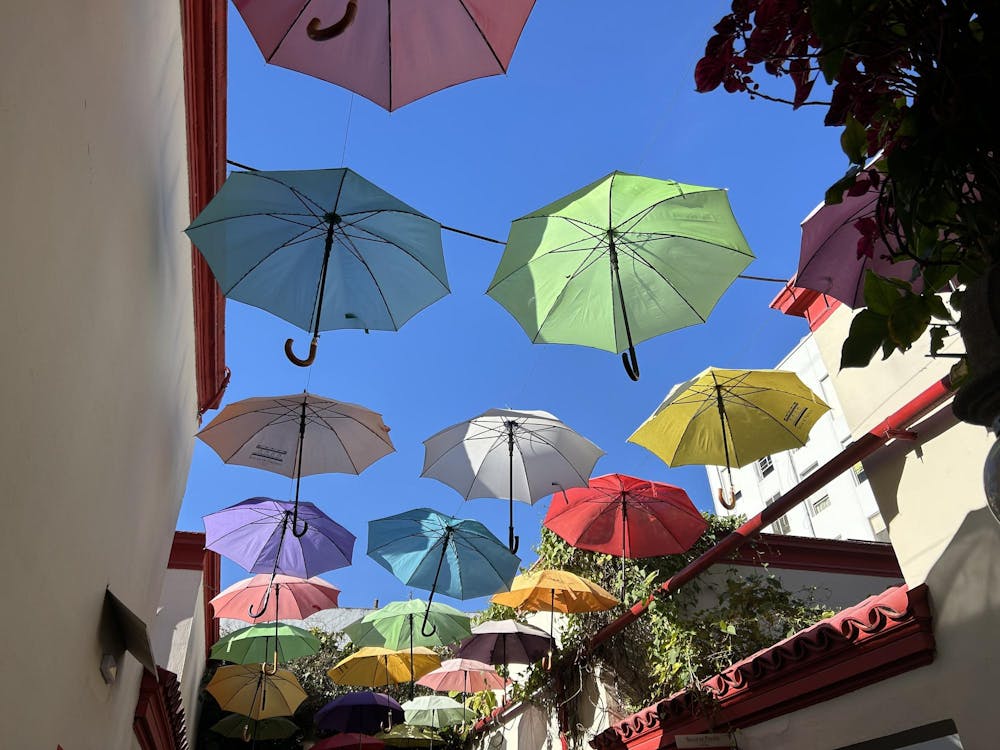There was something therapeutic about strolling on the uneven surface of cobblestone streets in the old neighborhoods of a city. The rustic facades of the weathered, closely-packed buildings lining the narrow sidewalks provide an intimate, homely beauty that make the walks all the more calming. Petite antique galleries, moody leather goods shops, and unassuming local eateries pique the interest of the artsy and thrifty. While the description matches a Manhattan scene, I am not referring to the Village or SoHo.
Spending the past two months interning at an education nonprofit in Buenos Aires, Argentina through Princeton’s International Internship Program (IIP), I have had a considerable amount of time to acquaint myself with the vibrant way of life in the “Paris of South America.” On the days when I was not busy writing grants, copyediting documents, or conducting online research for project development purposes, I would take the liberty of exploring different parts of the city — surprisingly always pulsing with restless and passionate energy, contrary to one’s expectations of the salience of the siesta stemming from Spanish colonial influence.
Though I thoroughly enjoyed wandering aimlessly in places ranging from the sleepy residential Caballito area to the more modern, upscale Puerto Madero, what I truly savored was the Sunday fairs, or ferias, as they are called by the porteños, or residents, of Buenos Aires.
These weekly ferias took place throughout the city, often in the more chic neighborhoods like Recoleta and Palermo Soho — which bears a fashionable resemblance to its namesake in New York City. Hosting endless tents of local artists, jewelers, leathersmiths, and other merchants, these ferias were a perfect opportunity for porteño artisans to showcase and sell their products: leather maté gourds, bronze figurines of tango dancers, corduroy tote bags, etc. Though I acquired many great souvenirs at these ferias, I found them to also be a place where I could get lost among the crowds shuffling up and down a narrow cobblestone street.
There was a surprising catharsis that comes along with absent-mindedly walking the entire span of an outdoor artisan fair, where vendors of antiques, hand-crafted metal works, and other crafts of various medium quietly tended to their stalls or humbly engaged in transactions with intrigued passerby. Whether I would briefly gaze at each stall or nonchalantly pass by them, I found comfort in the fact that I was one with the moving stream of bodies traversing the fair — an individual that is indistinguishable within a large public space.
A particular feria I liked to frequent was the one in the historically-Italian San Telmo neighborhood. Albeit a bit touristy due to the presence of a nearby renowned indoor food market, this feria’s large scale — with close to 300 stands clustered over approximately 10 blocks — made it the perfect place to get physically caught up in the dense surge of the fair’s attendees and, consequently, a great place to clear my mind of any lingering worries from that week.
Taking gentle steps forward on the subtly-eroded cobblestone streets eventually carried me through the entire span of the San Telmo feria. The simple act of walking through the large fair, following in rhythm and pace with the shifting crowd around me, placed me in a limbo of mindful consciousness. I was aware of the surroundings of the bustling multiplicity of feria attendees, yet simultaneously focused on my pensive thoughts about various matters that had dwelled in my mindspace since I had arrived in the country.
As I peered into the horizon of seemingly-unending lines of stalls, perturbations about my internship performance, my adjustment to the Argentine dialect of Spanish, and whether I would be able to thrive living on my own in one of the most prominent cities in Latin America were cast aside, at least momentarily. It was almost like a mental reset, to prepare for the upcoming week that would be prospectively filled with opportunities of growth and challenges — both professional and personal.

In these ferias, being an individual within conglomerate masses of other people — thus attracting little to no attention — allowed me a sense of internal security with my own mundane ruminations. In being able to ponder, validate, and ultimately resolve these sentiments, I was able to have a greater capacity of appreciation for my experience in Buenos Aires, no matter what sort of difficulties I had encountered during my time there.
For this, Sunday ferias were always something I looked forward to at the end of a week riddled with uncertainties, vagueness, and volatility of Argentine life. They were not only cultural explorations of local art and craftsmanship, but they were effective spaces to carry out intimate reflections of one’s worldly worries and hopes without drawing unwarranted external attention to the individual self.
The comfort I took in casually going to these local artisan ferias on lazy, mellow Sundays speaks to the understated tranquility of obscurity among the crowd, on par with the inconspicuousness of some of the feria vendors’ hand-made porcelain trinkets. The dynamic environment of a large public fair cultivated opportunities of soothing moments of pondering without unnecessary self-isolation. The resulting peace of mind, free of any doubts and inhibitions, was what enabled me to immerse myself in the plurality of adventures that Argentina had to offer.
Russell Fan is an associate editor for The Prospect at the ‘Prince.’ He can be reached at rf4125@princeton.edu, or on Instagram @russell__fan.









